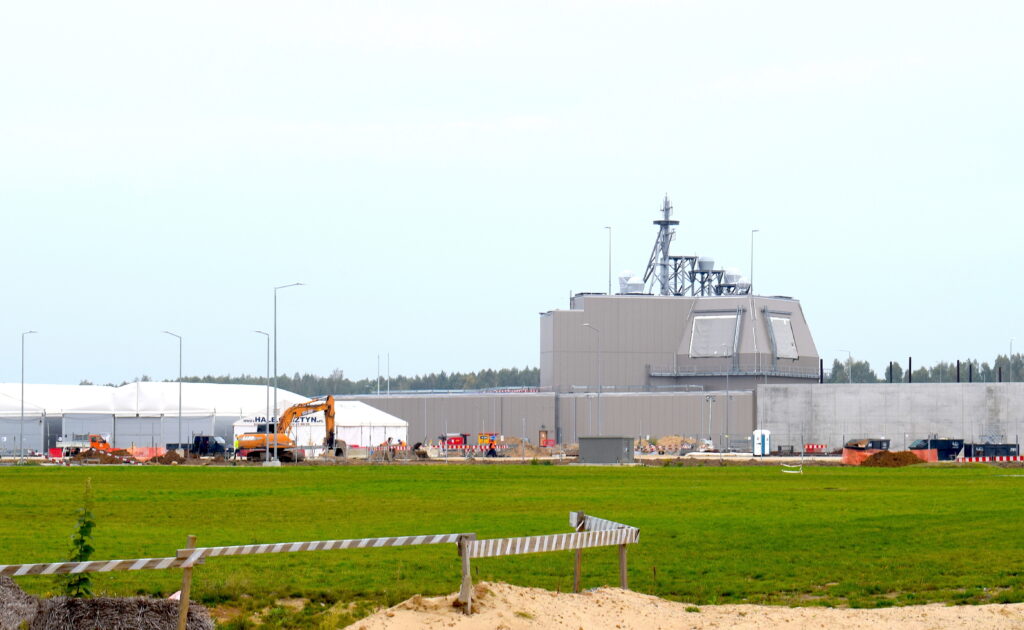
Aegis Ashore Missile Defense System site in Poland under construction.
WASHINGTON: The first moves to build an Aegis Ashore missile defense system on Guam could come in the 2022 defense budget, part of the US military’s efforts to beef up defenses for Pacific places likely to endure a first strike by Chinese forces.
Several sources familiar with the Pentagon’s budget discussions say there’s a push to fund the early work on placing the missile defense system on the island, an effort that current Indo-Pacom commander Adm. Phil Davidson has called his No. 1 priority.
In the days before Joe Biden was sworn in as president, then-Acting Defense Secretary Chris Miller signed off on a plan to begin Aegis work on Guam, but no money had been moved within the DoD to fund it. The project is currently being reviewed by the Pentagon’s Comptroller.
Davidson met with Defense Secretary Lloyd Austin and Deputy Secretary Kath Hicks at the Pentagon on his trip to Washington earlier this month, and “there’s certainly questions going around from Austin’s team,” about putting an Aegis on Guam, one person with knowledge of the situation said.
The Aegis request was a part of the Pacific Deterrence Initiative, a five-year, $27 billion proposal Davidson submitted to Congress earlier this month to build a string of networked, allied training ranges, improve missile defenses, and revamp complicated logistics lines across the Pacific.
The plan calls for $4.6 billion in 2022, and lawmakers have appeared so far to support the initiative, though it remains unclear how much money they’ll put toward the project in a year when the budget is expected to remain flat. Overall, the PDI called for $350 million in 2022 for the Guam Defense System, as part of a $1.3 billion effort by 2027.
During his Senate Armed Services Committee nomination hearing today the officer tapped to replace Davidson later this year, Adm. John Aquilino, said getting an Aegis on Guam would “certainly would be a top priority” for him if confirmed. And he told the SASC in written questions that the PDI is :”the foundational approach to advancing capabilities and capacity in lethality, force design and posture, logistics, exercises and experimentation, while strengthening our allies and partnerships for an integrated joint force west of the International Date Line (IDL).”
Multiple lawmakers pressed the admiral on his view of building the new missile defense system that would protect the island — home to 20,000 US service members. “There’s a need in the near-term to defend against all of those [Chinese missile] threats from a 360-degree standpoint, and if the answer is Aegis, I’m ready to support it,” he said.
In written responses to questions submitted before the hearing, Aquilino said that the US currently has “no rotational missile defense capabilities [which] are currently postured that will adequately address the threats we face from China, and a more robust defensive posture is the most pressing priority for the Indo-Pacific.”
Speaking at an AUSA forum on March 17, director of the Center for Strategic and International Security’s director of the Missile Defense Project, Tom Karako, said Davidson’s prioritizing of Aegis on Guam “is a big deal, and that point needs to sink in with the joint air defense communities.”
Guam has long been a central hub for US forces operating in the Pacific, and there’s “a tremendous opportunity to make Guam an operational test bed for some of the most important new capabilities coming online: JADC2, IBCS, layered air and missile defense, hypersonic strike, and other missile defeat mechanisms,” Karako said. “Guam can be the playground, the locus, of these activities.”
Davidson recently said that an Aegis on Guam would free three Navy destroyers currently providing missile defense mission there, a point that will resonate strongly within the sea service which has for years said it wants out of the missile defense business.
As part of his Navigation Plan released in January, CNO Adm. Mike Gilday wrote that part of modernizing the Navy will include not only divesting of “experimental Littoral Combat Ship hulls, legacy cruisers, and older dock landing ships,” but also walking away from the Aegis Ashore mission, handing it off to another service.
In his call for “divesting non-core Navy missions like Aegis Ashore,” Gilday said that “transferring shore-based ballistic missile defense sites to ground forces enables Sailors to focus on their core missions at sea and frees up resources to increase our lethality.”
The issue will ultimately rest with Congress, which will spend months hacking its way through a number of pressing issues in the 2022 budget, including if and how much to increase the Navy’s shipbuilding budget, how and when to begin modernizing the nuclear triad, and weighing competing modernization efforts each service is pitching as critical to its future.
The PDI will have a role in those discussions. The 2021 NDAA included $6.9 billion for the the plan over two years, with just $2.2 billion of that coming in 2021, placing the onus on the Biden administration to not only continue the effort, but grow it.
Move over FARA: General Atomics pitching new Gray Eagle version for armed scout mission
General Atomics will also showcase its Mojave demonstrator for the first time during the Army Aviation Association of America conference in Denver, a company spokesman said.


























